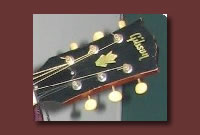I cdnuolt blveiee taht I cluod aulaclty uesdnatnrd waht I was rdgnieg
THE PAOMNNEHAL PWEOR OF THE HMUAN MNID
Aoccdrnig to a rscheearch at Cmabrigde Uinervtisy, it deosn’t mttaer in waht oredr the ltteers in a wrod are, the olny iprmoatnt tihng is taht the frist and lsat ltteer be in the rghit pclae. The rset can be a taotl mses and you can sitll raed it wouthit porbelm. Tihs is bcuseae the huamn mnid deos not raed ervey lteter by istlef, but the wrod as a wlohe.
Amzanig huh?
Perhaps this accounts for why I am such a lousy proofreader.
via John, the Legionnaire Wannabe, and who, with a straight face, claims to have grown up in Hudson County.





Way back in design school, we also learned that people generally only read the top two-thirds of the letters, not the whole thing–if you showed people a line of text that was made up entirely of just a bit more than the top half of a line of text, they could read it with few errors. If you showed them the same amount of the bottom, though, they had huge issues.
The human mind performs a couple of different kinds of pattern recognition all at the same time as it reads text–an amazing thing.
Comment by zombyboy — May 1, 2004 @ 8:22 pm
Amazing. It really works.
Comment by david — May 3, 2004 @ 10:11 pm
does someone know who the reasearcher at cambridge is? Please post to the list if possable.
Comment by Adnerw — September 28, 2004 @ 5:15 pm
While the point about the human mind reading whole words at a time is true, the rest of the message is somewhat misleading. There are several other reasons that you can read the message.
First, the human mind understands context. Once it starts to formulate an idea by getting a few words, it can automatically guess what the surrounding words will be based on context. For example, take the phrase “cluod aulaclty” out of context, and it will take you longer to get “could actually.”
Second, if you keep the first and last letter then in most cases the word will phonetically be very similar to the original word. Even though you may read the message silently, your mind is still processing the words phonetically, and when combined with context, the mind quickly identifies the appropriate word.
Third, if you look closely, especially at the larger words, they haven’t really jumbled the letters up in a truly random fashion, they have just mixed them a little. For example, it is much easier to get “University” from the word “Uinervtisy” than say, “Uertiivsny.” This latter point is what makes the whole message misleading. They have purposely organized the letters within each word to still resemble the original word. However, even Uertiivsny would still be interpreted rather easily – not because the mind reads whole words at a time, but because it is preceded by the phrase “research at Cambridge.” Who wouldn’t automatically put University next? Also, there are only about 5 different phonetic sounds in the word University, and leaving the first and last already gives you two of the five.
Yes, the human mind is amazing, but this email is really more of an exercise of how the mind can be duped into believing something is true when it is not, or true for the wrong reasons.
Comment by Josh Rolfe — December 17, 2004 @ 11:20 am
This is NOT true infact.
In such cases and in my opinion, Human Mind can only read/ Understand a word, that it has already Read. Human Mind makes the copy of the letter in its memory and matches the Mingles Word with it and give us the closes correct match. However ,if you read a Word that Human Mind has not in memory (not already Read its Correct Form). It will not be able to recognize it when presented in Mingled Form.
Comment by kashif — May 31, 2005 @ 9:03 am
it is certainly interesting to see extra capabilities of the human mind, but what is more amazing, but something that we all take for granted is the ability of the human mind to differnetiate images. for us to be able to see a tree next to a bush when they are very similar colours is even more impressive
Comment by Jeremy Sutherfield — October 2, 2005 @ 10:13 am
Haben Sie das auch in Rot, Bitte?
Comment by Bjorn — February 26, 2006 @ 11:46 pm
Leider, nur in Blau.
Comment by Jim - Parkway Rest Stop — February 27, 2006 @ 12:10 am